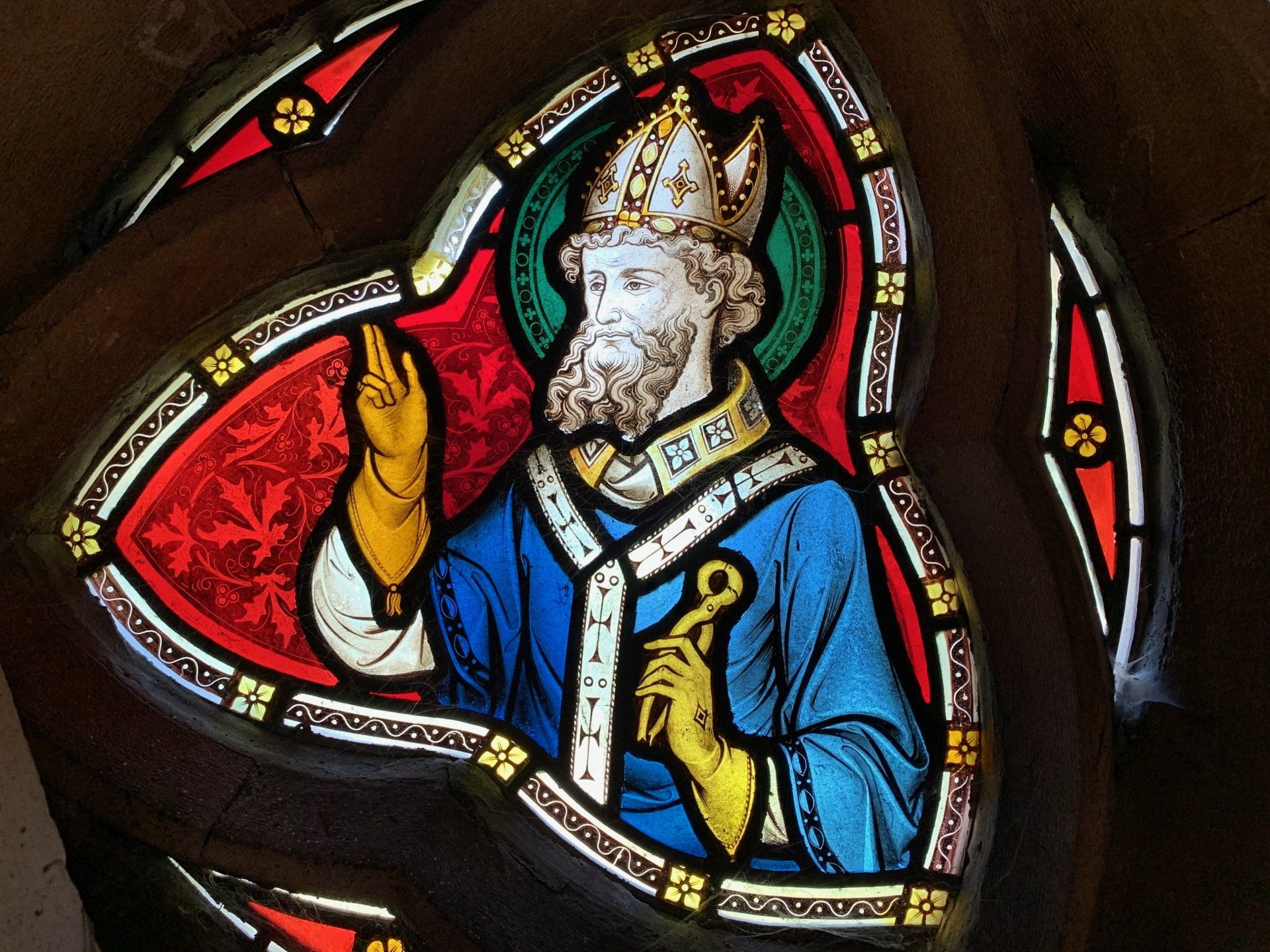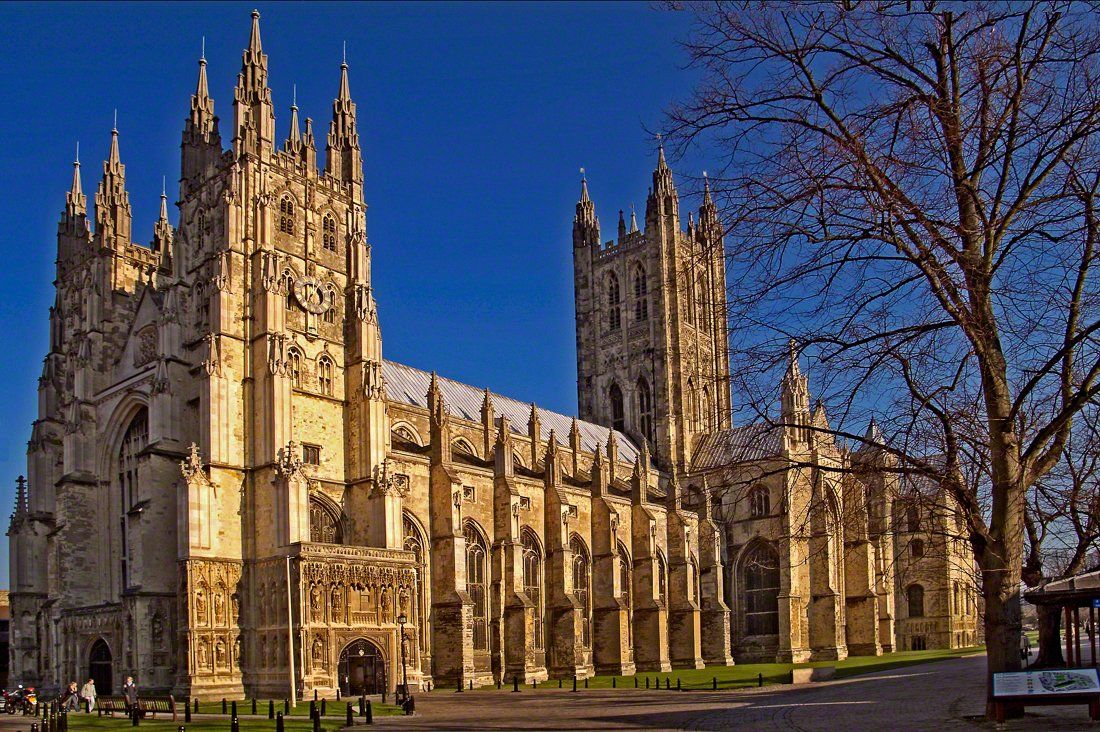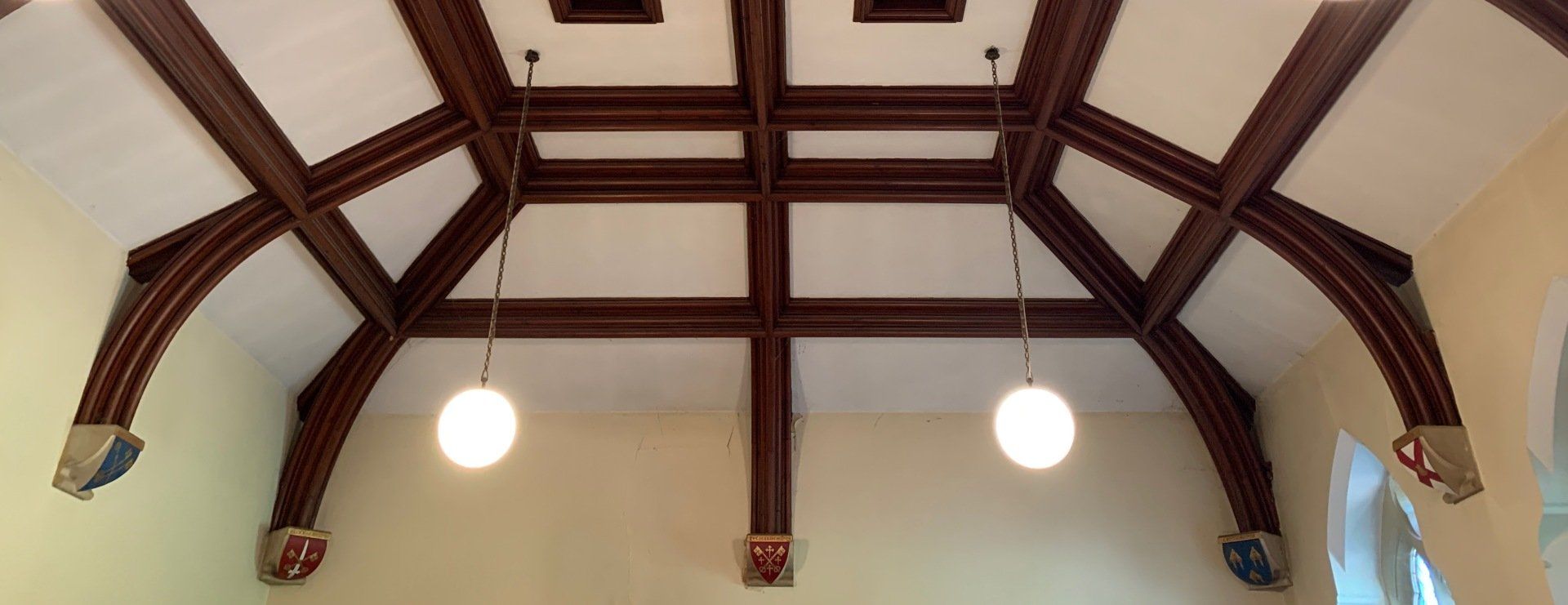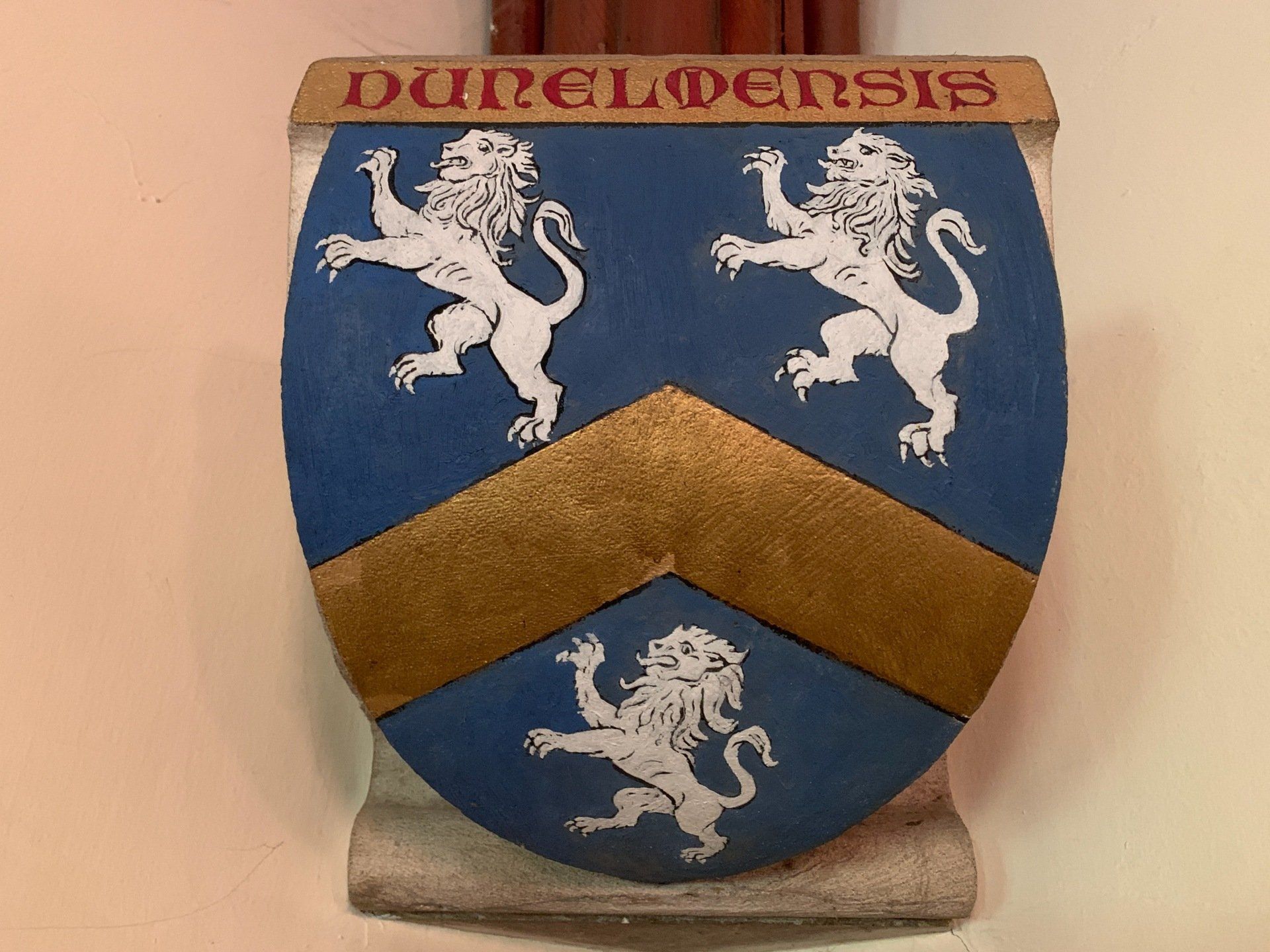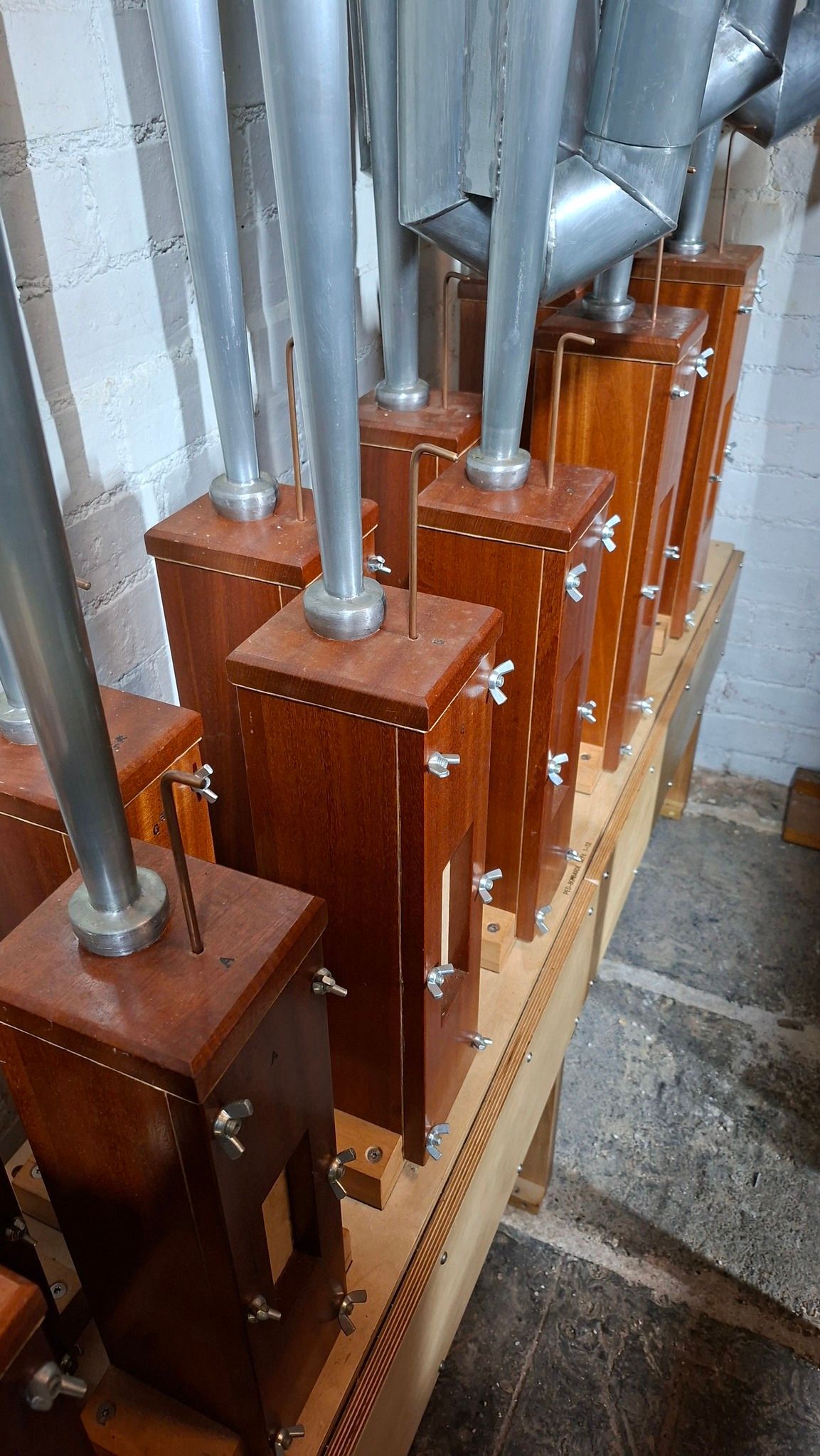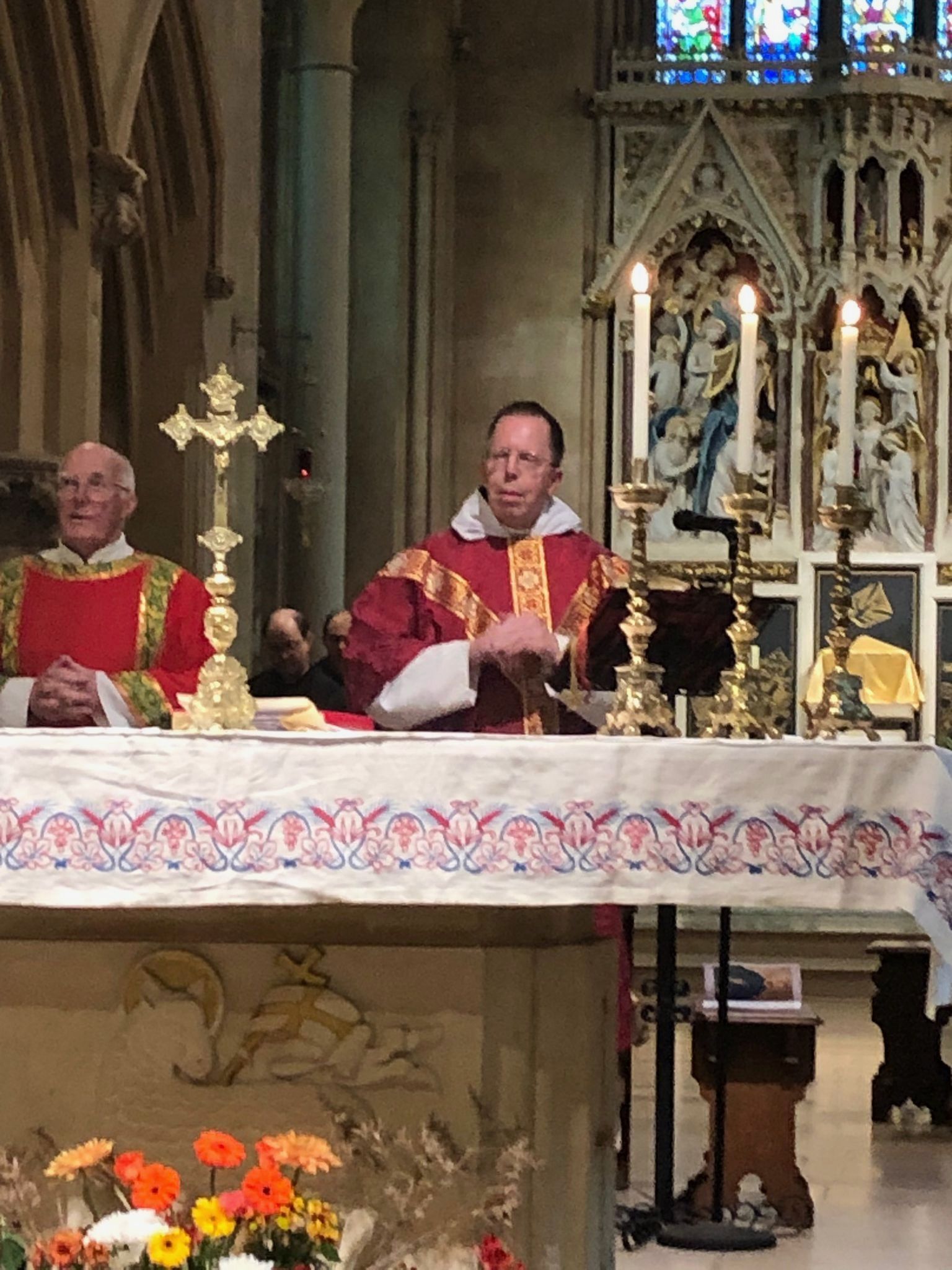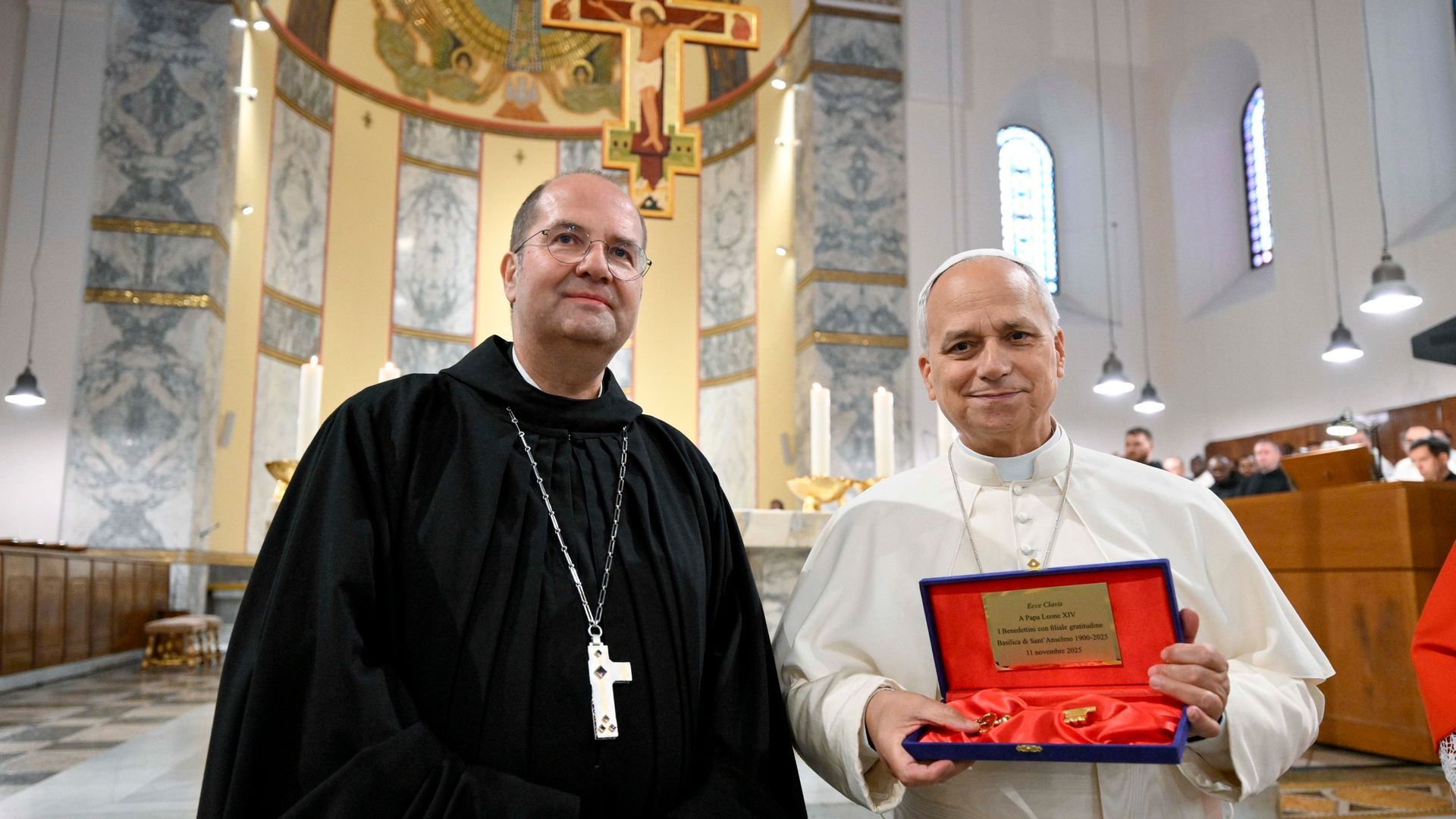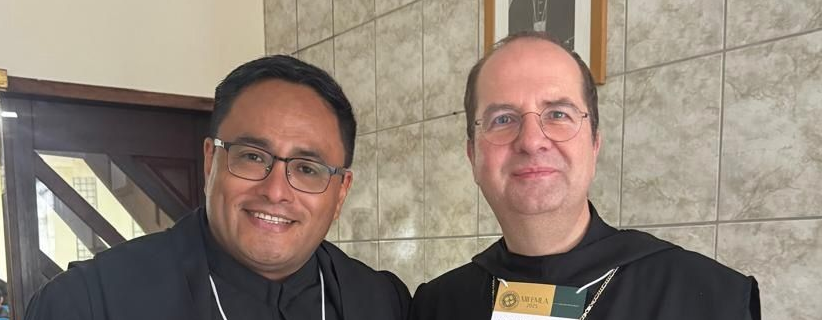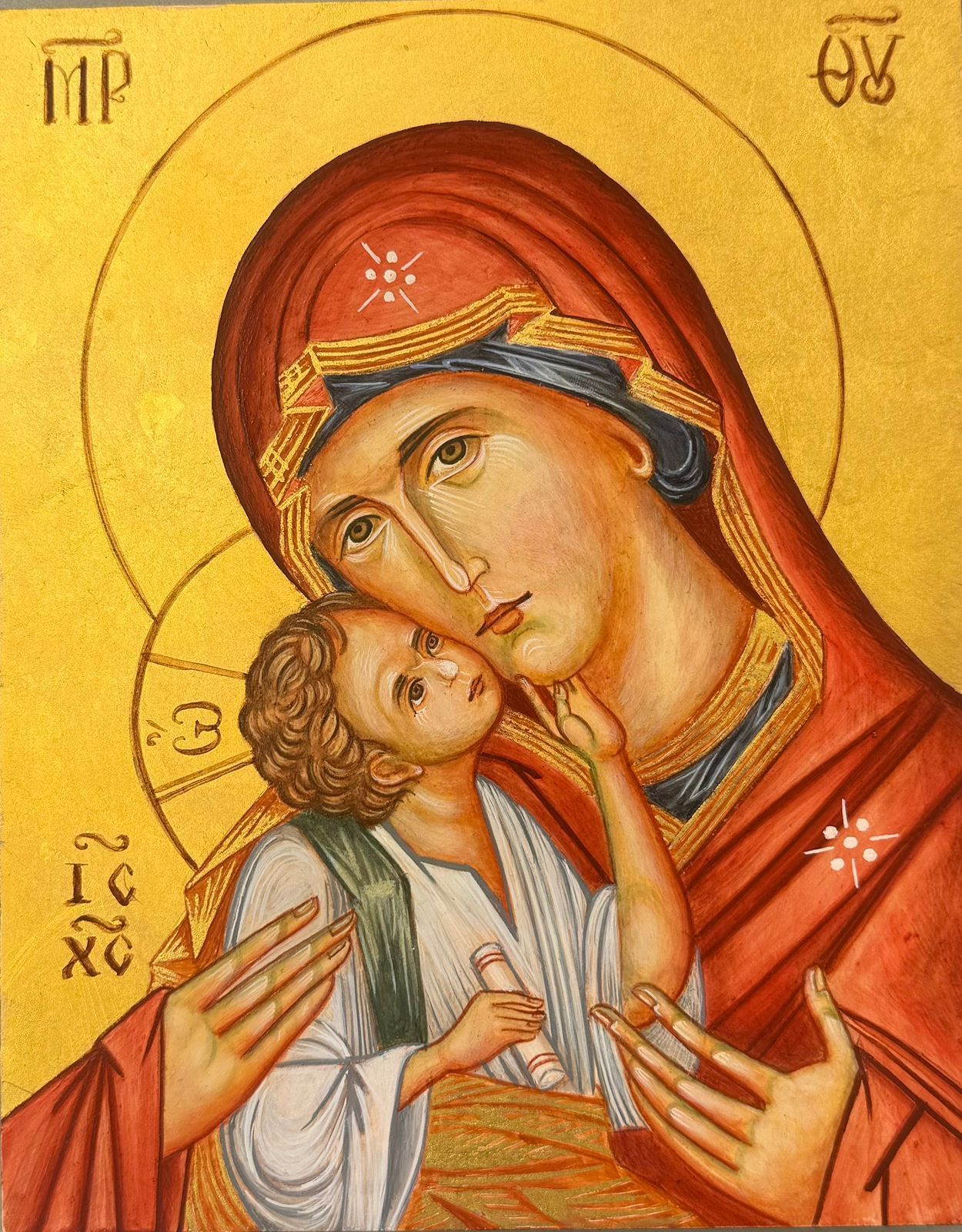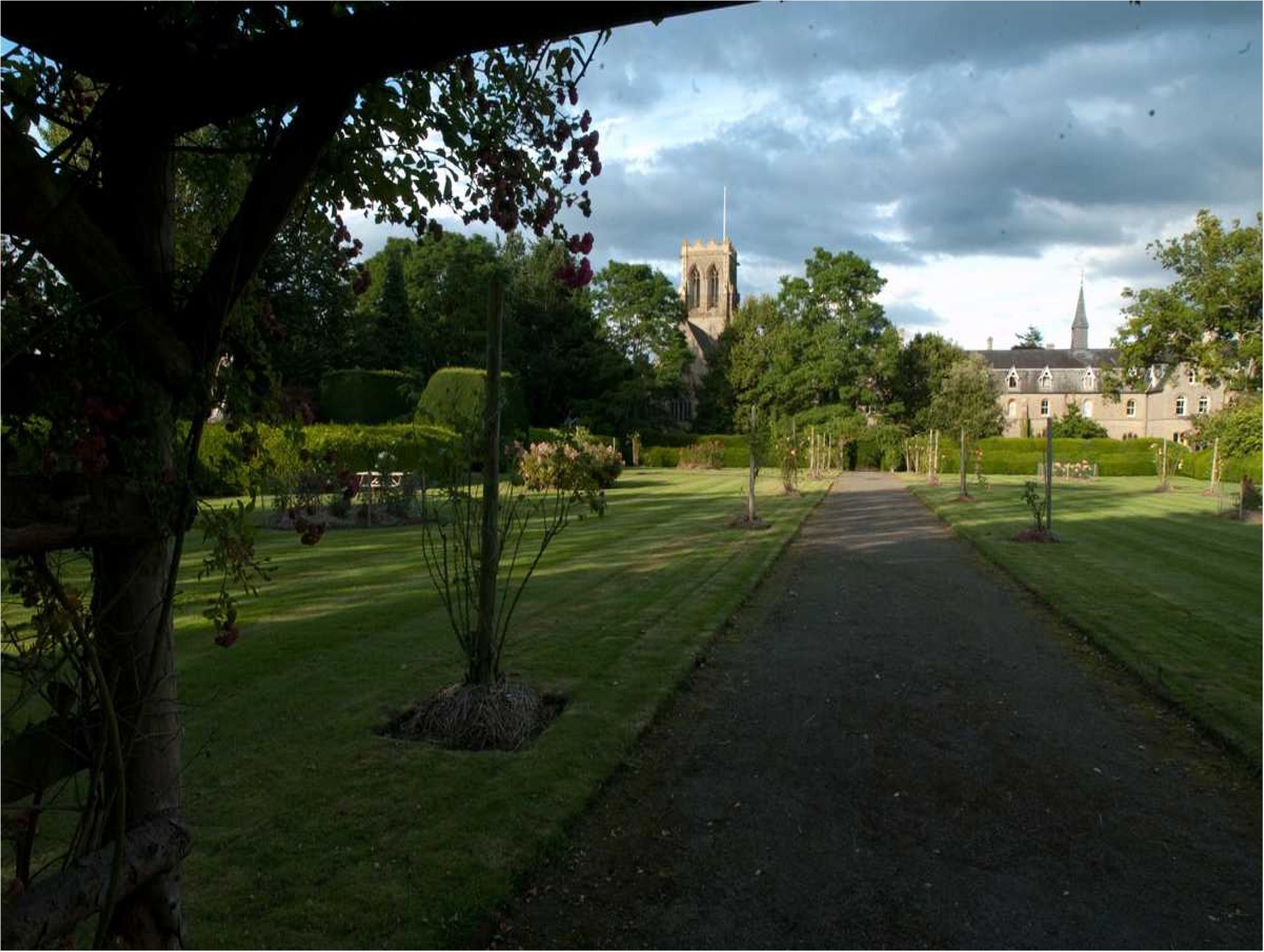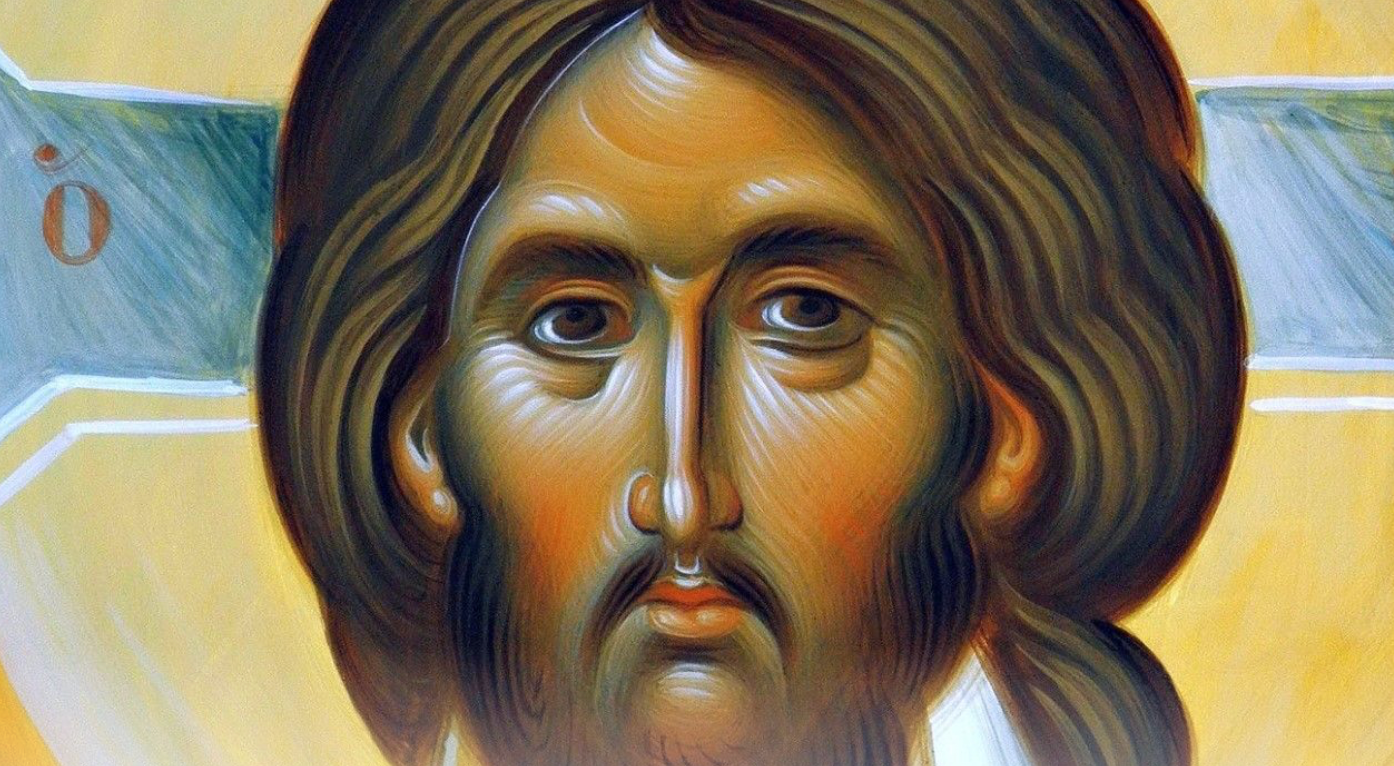Saints Dunstan, Ethelwold and Oswald
Fr Brendan Thomas • May 19, 2020
Monastic History in Glass and Stone (5)
Today is the feast of Saints Dunstan, Ethelwold and Oswald. It has been said that no period in English history is more unfairly neglected than the tenth century. It is easy to forget the significance of the people and events of this time in the 'birth of the English nation'.
Three Remarkable Men
The glory days of Anglo-Saxon monasticism were cut short by incessant foreign raids. There was almost nothing left of it after the Danish invasions of the 9th Century. In the 10th century, however, there emerged three remarkable and determined figures who were to bring about a revival: St Dunstan (c.909-988), St Ethelwold (c.910-984) and St Oswald (c.925-992).
Dunstan is probably the most well known. According to legend he had a number of encounters with the devil. He is portrayed in the rose window of St Benedict's Chapel with the blacksmith's pincers with which he is said to have pulled the devil’s nose and made him run down the street shouting! As a folk-tale puts it:
St Dunstan, as the story goes,
St Dunstan, as the story goes,
Once pull'd the devil by the nose
With red-hot tongs, which made him roar,
That he was heard three miles or more.
Charles Dickens refers to the story in A Christmas Carol: "Foggier yet, and colder! Piercing, searching, biting cold. If the good Saint Dunstan had but nipped the Evil Spirit's nose with a touch of such weather as that, instead of using his familiar weapons, then, indeed, he would have roared to lusty purpose."
Another story tells of how Dunstan nailed a horseshoe to the Devil’s hoof when he was asked to re-shoe the Devil’s horse. This caused the Devil great pain, and Dunstan only agreed to remove it after the Devil promised never to enter a place where a horseshoe is over the door. This is claimed as the origin of the lucky horseshoe.
Greatly influenced by continental reforms, the initial monastic zeal of the these three great saints suffered many setbacks. However, when King Edgar came to the throne they found him to be an enthusiastic patron. Dunstan was made bishop of Worcester but was soon transferred: first to London and then Canterbury. Ethelwold was made bishop of Winchester and Oswald was appointed to Worcester.
Cathedral Priories
In 964 Ethelwold made the extraordinary move of expelling the married secular canons from Winchester Cathedral and installing monks from Abingdon to make it a liturgical centre staffed by men living an edifying monastic life. Thus the peculiar English institution of the cathedral priory was brought into existence. Within a few years Winchester would be followed by Worcester and Canterbury and others both before and after the Norman Conquest. In all, seven of the great mediaeval cathedrals were served by Benedictines: Canterbury, Durham, Ely, Norwich, Rochester, Winchester, Worcester. (In addition Bath and Coventry were the monastic parts of double chapters with the Cathedrals of Wells and Lichfield respectively).
The restored abbeys of Glastonbury, Abingdon and Westbury-on-Trym became centres of a reform that succeeded in restoring ruined houses and founding new ones. Some forty monasteries were founded, among them some of the most celebrated of the Middle Ages. The desire for a single uniform observance amongst the houses led to a meeting at Winchester in 970 that produced the remarkable Regularis Concordia (Monastic Agreement), which has been called the ‘Magna Carta of English Monasticism.’ The programme of reform is that of the Synods of Aachen and drew on Dunstan and Ethelwold’s own experience of continental monasticism. The King was now patron and protector of the whole Benedictine enterprise and monasteries became a vital part of the national life of England. We only need to think of the part Westminster Abbey has played in the life of the nation.
The Belmont Connection
The corbels in Belmont’s Sacristy are decorated with the coats of arms of the Cathedral Priories and are a reminder of the unique way Belmont inherited this peculiarly English ecclesiastical arrangement. When Belmont Cathedral Priory was founded in 1859, the institution of the Cathedral Priory was restored in England after a lapse of more than 300 years. Once again, and for forty years to come it would be the only Cathedral in the English-speaking world in which the canons (who were monks) publicly celebrated the Divine Office.

